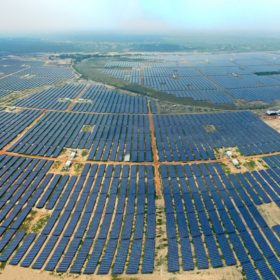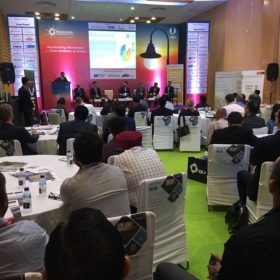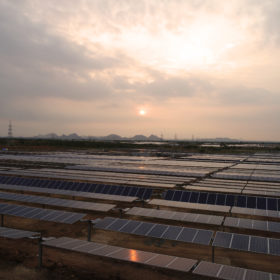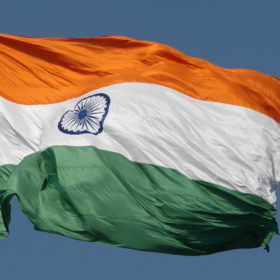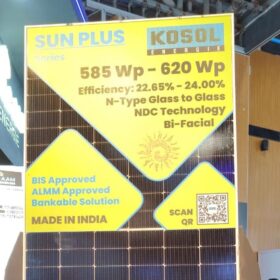Top 3 developers commissioned one-fourth of utility-scale PV projects
Of the total 9,538 MW of solar capacity commissioned between October 2017 and September 2018, Adani bagged the lion’s share at 11%, followed by Acme (7.5%) and Renew Power (7.3%), finds Bridge to India. The analyst company also tracks tariff trends between 2016 and now.
India’s solar energy capacity is growing
India’s electricity sector is transforming rapidly. A 50% decline in wind and solar tariffs since 2016 means renewable energy is now the lowest cost source of new generation. This has turned the established order in India on its head.
Growing awareness of quality, but still a need for more
There is no doubting the tough environmental challenges facing PV modules and systems among the varied climactic conditions of India. These conditions have created earlier failures than seen in mature solar markets, with less diverse temperature fluctuations, such as Europe. DuPont’s Rajaram Pai says awareness of this is growing, however more needs to be done.
Fresh blow for PV with 18% GST rate
The decision to tax the ‘service’ provided to solar developers at the full rate comes days after the Supreme Court upheld the federal government’s imposition of a 25% safeguarding duty on Chinese and Malaysian panels.
Making India’s solar sector resource efficient
By adopting resource efficiency measures, the Indian PV solar manufacturing sector can reduce its material requirement from an estimated 12 million tons to 8.2 million tons by 2030. The resource-efficient approach will also increase efficiency to more than 30% from 6% in 2018, according to a study conducted under the European Union’s Resource Efficiency Initiative (EU-REI) Project.
Suzlon partners with CLP for 70 MW solar capacity in Maharashtra
CLP India will acquire a 49% stake in Suzlon’s 50 MW and 20 MW solar projects in Dhule, Maharashtra. These two projects were won by Suzlon through competitive bidding in auctions by the Solar Energy Corporation of India Limited (SECI). As per the power purchase agreement signed, the tariff rate is fixed for 25 years at 4.115 INR/kWh for 20 MW and 3.66 INR/kWh for 50 MW.
India’s Supreme Court allows imposition of 25% duty on solar imports – reports
In a significant move, which will greatly impact India’s solar industry, the country’s Supreme Court has reportedly given the go-ahead for the government to impose 25% safeguard duties on imports of PV cells and modules. The levy will be effective July 30, 2018.
PV installations in Q2 fall by half
In the second quarter, India installed solar projects amounting to 52% less capacity quarter-over-quarter, due to uncertainties around trade cases, module price fluctuations, and PPA renegotiations prompted by record low solar tender bids.
Government focuses on PV quality concerns
The award of the nation’s first solar project quality certificate may signal a renewed determination by the federal authorities to crack down on low-quality panels – with Far Eastern imports firmly in their sights.
Power regulator told to pass on changes in duties to consumers
A time-bound process would eliminate financial uncertainties for stakeholders – be it developers, lenders or the DISCOMs. It is a particularly big relief to solar PV power developers seeking pass-through for the impact of goods and services tax (GST) on project costs.
